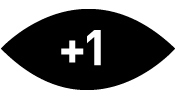

One of the all time great prison pictures, Brute Force is an unrelenting tour de force from the visionary director Jules Dassin and the distinctive New York journalist turned film producer Mark Hellinger. This men-behind bars drama unfolds with raw intensity, unapologetically exploring the brutal nature of both confinement and the human spirit. With an exceptional cast led by Burt Lancaster, Brute Force leaves an indelible mark on the annals of film noir.
Set in the infamous Westgate Penitentiary, the film wastes no time in immersing the audience in its oppressive atmosphere. From the opening scenes, where we witness the cold, gray walls of the prison closing in on the inmates, to the dimly lit corridors and the haunting echoes of desperation, Dassin captures the claustrophobic essence of life behind bars. This is an A-list picture but it was still made on a budget; shot on recycled Universal sets that still look incredibly impressive. Lit by cinematographer William H. Daniels, known for glamorous MGM epics, especially ones featuring Greta Garbo (he was her favorite DP), the film has some striking expressionistic shots with unusual compositions. Daniels enhances the somber mood, employing shadows and low-angle shots to heighten the tension.
Lancaster delivers a powerhouse performance as Joe Collins, a hardened convict with a relentless determination to escape the clutches of the sadistic prison system. His magnetic presence and physicality make Joe a force to be reckoned with, embodying both strength and vulnerability. Even more brilliant and memorable is Hume Cronyn as the sadistic Captain Munsey, a corrupt prison official who revels in the abuse of power. Cronyn's nuanced portrayal exudes menace. His calculated cruelty and manipulative tactics propel the narrative forward, as the inmates hatch a daring plan to fight back against their oppressors.
Brute Force delves into the psyches of its incarcerated characters, exposing the underlying themes of sacrifice, loyalty, and the will to survive. It displays a remarkable understanding of the human condition, exploring the moral complexities that arise when men are pushed to the brink. Hellinger wrote the film's original story( though it is credited to Robert Patterson) and the script is penned by Richard Brooks (who would go on to his own iconic directing career). Like Citizen Kane scribe Herman J. Mankiewicz, Brooks is a literate screenwriter, and some of his language is a bit flowery for the prison denizens of this picture. But most of the dialogue crackles with intensity, fueling the mounting tension between the inmates and their captors.
Jack L. Warner had brought Mark Hellinger to Hollywood in the 1930s to develop screenplays imbued with the newpapermans' signature street-wise patter. Hellinger, worked on scripts for many years and soon began his carrier as one of the earliest high-powered independent producers. He made four classics tough-guy movies directed by Raoul Walsh: They Drive by Night (1940), High Sierra (1941), and Manpower (1941). In the mid-40s he set up is own producing unit within Universal, scoring a huge hit with Robert Siodmak’s film noir classic The Killers (1946), which made Burt Lancaster a star. He reunites with Lancaster here, and launches his collaboration with director Jules Dassin, with whom he would make the groundbreaking The Naked City the following year. [The Hellinger/Dassin partnership could have been one of the most fascinating producer/director relationships had Hellinger not died prematurely at the end of this year and Dassin not been blacklisted a year later.]
As soon as he arrived at Universal, Hellinger knew how to take advantage of the amazing roster of character actors the studio had under contract. He crafted material around new leading men like Lancaster as well as distinctive side men like Charles Bickford, Art Smith, Whit Bissell, Richard Gaines, and Jay C. Flippen—all of whom get choice roles in Brute Force. Like The Killers and The Naked City, Brute Force is told episodically with light and dark flashbacks that unfold in the mannor of the short human-interest stories Hellenger wrote when he was a journalist. Dassin opposed the use of flashbacks in the picture, and with good reason. These mental escapes from the walls of the prison change the tone in ways that make the film more accessible to a mass audience who might be turned off by the grim determinism Dassin was going for. The flashbacks don’t really add anything to the story or even to the characters. But they do provide the picture with glamorous A-list female stars, which Hellinger knew would be good for box office. Yvonne De Carlo, Ann Blyth, Ella Raines and Anita Colby are featured prominently in the credits and in the film’s advertising but their roles are pretty minor.
Even with the flashbacks offsetting the tone, Brute Force is one of the grimmest film noirs. Not just pessimistic but fatalistic. It is a sharp left-wing critique of the prison system and the growing right-wing movement in the US. Every authority figure in the film is either a week-willed figurehead like Roman Bohnen’s Warden A.J. Barnes, a sadists like Cronyn’s Capt. Munsey, or a soft liberal like Art Smith’s Dr. Walters. The doctor is an old drunk who has compassion for the prisoners, but in the end doesn’t do anything except make ineffective speeches. His monologues, which often feel like the writer, the producer, and the director speaking directly to the audience, are the weakest aspects of the picture. Still, it’s an effectively pointed dig at the Democratic establishment that the only time the film’s main liberal voice takes any kind of risk, it is to worn the heroes and try to convince them not to try to take action against their situation.
Brookes and many of the actors, including Lancaster, fought fascism directly in the war. They witnessed it up close and thus reacted strongly when they saw its rise in their own country. The most pointed themes in Brute Force are expressed via the character of Munsy. Brooks, Dassin, Hellenger, and Cronyn create a mini-fascist dictator in this police captain. Munsy loves to torcher the prisoners; in one key sequence, he strips down to his undershirt and beats a man while playing Vagner’s “Flight of the Valkyries” on his phonograph. This is also one of many homoerotic aspects of Munsy’s relationship with the prisoners. In another scene, he drives a man to suicide by convincing him that women are no good.
Dassin's directorial prowess shines through in every frame, infusing the film with a gritty realism. The whole thing leads up to one of the all-time great prison break sequences. Expertly choreographed and photographed, it builds to a fever pitch that keeps viewers on the edge of their seats as we bear witness to the struggle for freedom. It’s a struggle in which good doesn’t necessarily triumph, which is part of why this film should always be included in the lists of great film noirs despite not meeting all the usual criteria of that genre.
Though the noir style of crime movies would continue on for years and years, I believe 1947 marked the peak of film noir, which soon gave way to less cynical, less pessimistic police procedurals in the 1950s. Ironically, one of the most significant pictures that kicked off the shift to movies that reassured the public about law enforcement, the justice system, and the institutions of American democracy was The Naked City, made by Hellenger and Dassin as their immediate follow-up to this hard-hitting exposé on the failures, corruption, and brutality of those very same institutions.
Twitter Capsule:
Burt Lancaster heads up a brilliant cast of character actors in this first-rate prison picture. Director Jules Dassin, producer Mark Hellinger, screenwriter Richard Brookes, and cinematographer William H. Daniels craft a film noir classic that explores the brutal and fascistic nature of confinement.






